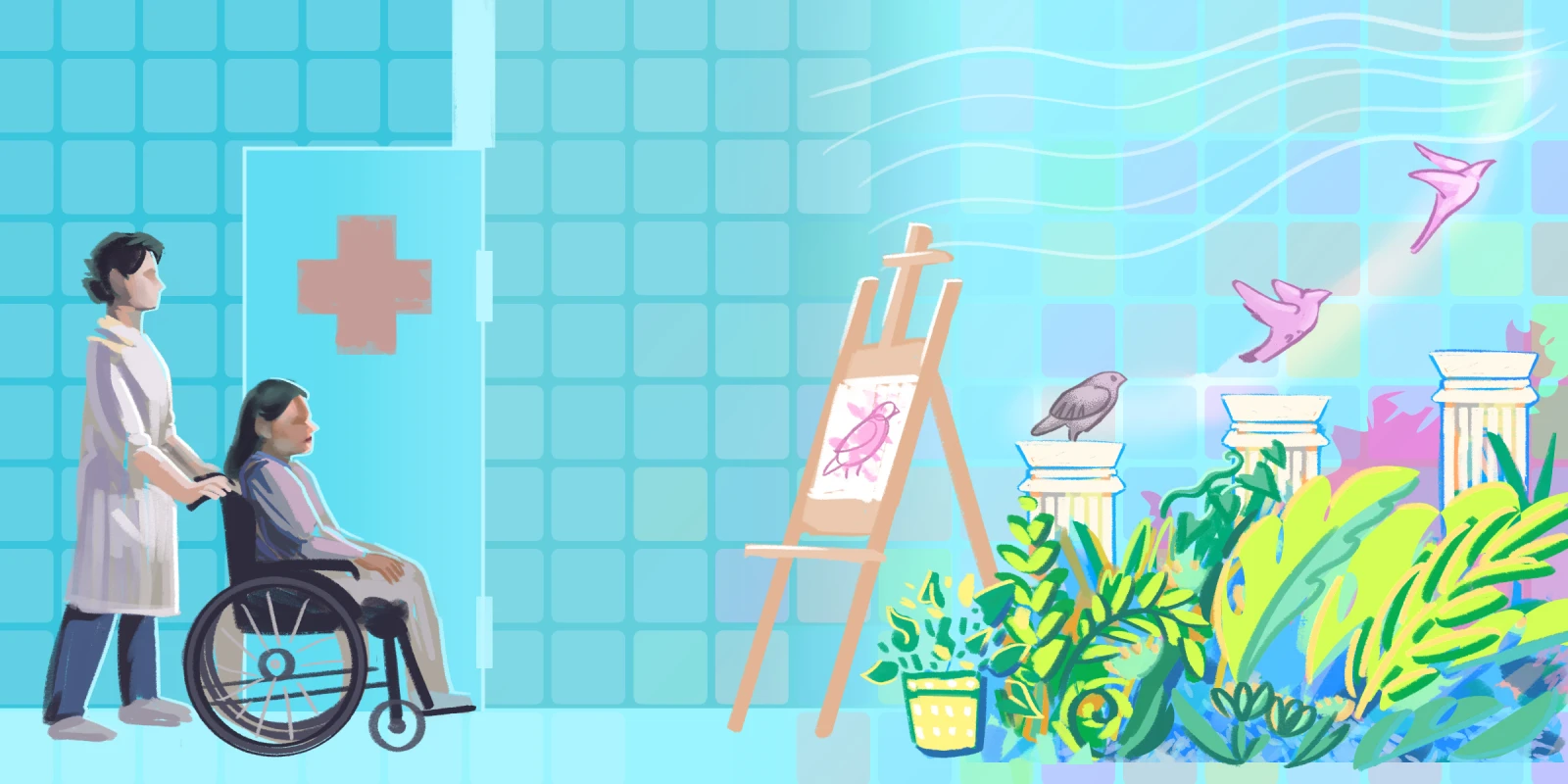Health care centers can feel devoid of the comforts of home, contributing to increased anxiety and stress on the part of both the patient and their family. Adding art to the often sterile walls of waiting rooms, hallways, and patient wards can improve the patient experience by adding a human touch and breathing new life into a frequently stressful environment. In surveys of patients at a Florida academic health center, 39% felt that art helped reduce their pain or improve their comfort levels.
Several major academic health centers have invested in art programs to improve patient experience. Medical Director Dr. Francois A. Bethoux at the Cleveland Clinic Arts and Medicine program, which displays more than 6,000 art works in its various locations, explained, “Even though it’s named the Arts and Medicine program, we tend to think of it as arts in health.” The focus of the Arts and Medicine program, according to Dr. Bethoux, is to “blend the arts, making them really a part of the evaluation and treatment process.”
The Cleveland Clinic has promoted the therapeutic power of visual art for years, and started its program by first collecting surveys from patients on whether they had noticed the artwork and how they would describe the newly decorated space. Some of the common descriptors were “inspiring,” “inviting,” “calming,” and “welcoming.” Of the patients with mental and physical conditions such as panic disorder, hypertension, breast cancer, or PTSD, 73% experienced a slight or significant improvement in their mood, and 61% saw improvements in their stress levels.
Patients can also participate in the creation of visual art through art therapy programs that provide them the chance to display their work throughout health centers, inspiring both patients and clinicians. Dr. Daniel Christian Potts, a Veterans Affairs neurologist in Alabama, who first saw the benefits of art therapy when caring for his late father with Alzheimer’s, has seen similar effects with his patients. “With my dad, it was tough to communicate and be present with him. Whether it was looking at something he painted or painting together, it was a means of engaging with them and building a relationship. It enables the provider to tap into that human side,” Dr. Potts said. In his experience, both looking at art and creating it have been beneficial to his patients, which led to the creation of his nonprofit organization, Cognitive Dynamics, which utilizes art therapy and education programs to benefit patients with cognitive disorders like Alzheimer’s. One of the programs, called Bringing Art to Life, pairs people living with dementia with students and leads them through art therapy activities together.
Visual art helps a wide variety of patients, according to Dr. Potts, including patients with chronic debilitating illnesses like dementia and MS, patients dealing with mental and emotional symptoms like PTSD and trauma, and patients with chronic pain or cancer. Dr. Potts believes that art therapy, “enables patients to process things that are painful to them. This helps [them] to recast illness in a different light. It can make meaning of suffering.”
A 2019 review of the therapeutic potential of visual art compared two surveys that looked at which art was best for clinical settings. One study found that adults had extremely positive or negative feelings about abstract paintings, as well as higher postoperative anxiety in patients. Children also prefer nature and impressionistic scenes, but didn't have as negative of feelings towards abstract paintings as adults.
Both Dr. Bethoux and Dr. Potts provided tips on how to incorporate more visual art into health care centers.
“What I will recommend is to actually integrate patients and their families and get input on what they would want and what they would find healing. This can be done through a patient panel or survey,” Dr. Bethoux said. He added that the vignettes (accompanying written statements with works of art) should not be overlooked since he was surprised by how many patients read the vignettes and are inspired by them. “We had an exhibit [with vignettes] organized around cancer [at the Cleveland Clinic]. We had one patient that had done a lot of art while receiving treatment and unfortunately passed away. His family described how important art was and [how] the art helped them to grieve in a positive way,” Dr. Bethoux continued. He emphasized that clinicians should strongly consider art that is produced by patients or those who have been patients.
Dr. Potts focused more on where art should be placed in the clinical setting: “Tensions run high with anyone that is entering into a medical facility. There’s certain places that might have more impact [such as] entrances to medical facilities … hallways leading to waiting rooms, and emergency departments or surgical sites.”
Adding art to their practice has helped both Dr. Bethoux and Dr. Potts be more creative in their personal lives. Dr. Potts explained, “Because of my experience with my dad, I explored my own creative side after that and got into poetry and photography. I have used my own photography in the patient setting. I will print canvases of those. I will use work from friends that are artists and patients who have created art in therapy.” Dr. Bethoux is also the editor in chief of the International Journal of MS Care and the journal has showcased artwork from MS patients on its cover for the past two years through a collaboration with the MS Association of America.
“If you have patients that are creative, ask if you can display some of their art. It creates more of a personal experience,” Dr. Potts said. He advised others to consider leaning into their creative side by taking up a new hobby like painting or photography, talking to patients about their creative pursuits, or referring patients to art therapy programs and utilizing the work they produce. The result will be a more visually stimulating, comforting space for clinicians and patients.
How do you decorate your medical office? Share your ideas in the comments below.
Illustration by April Brust







